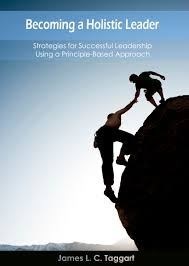What Are Your Organization’s Core Competencies? Remembering C.K. Prahalad’s Thought Leadership

Let’s look at what’s referred to as an organization’s “core competence.” The irony is that this concept, created some 30 years ago, has incurred a resurgence of interest, following years of adherence to the belief that corporations exist for one sole purpose: to maximize shareholder wealth. Even “Neutron” Jack Welch, retired CEO of General Electric, has dumped on the concept, admitting it was foolish. Corporations, it appears, do indeed have more than just a pecuniary interest as a focal point.
So from where did the idea of core competence emerge, and what does it encompass?
In the May-June 1990 issue of the Harvard Business Review, the late C.K.Prahalad and his mentee Gary Hamel co-wrote a seminal piece entitled The Core Competence of the Corporation. Prahalad’s death in 2010 ago helped refocus attention on his progressive thinking and writings.
What is especially striking about this paper is just how relevant it is to today’s highly volatile economic environment. Thinking about the geo-political and economic events that have occurred over the past quarter century underscores how forward-thinking Prahalad and Hamel were when they wrote their article. This post, therefore, shares some of the article’s highlights and encourages your personal reflection on the concept and what it means for your organization.

Core competencies may be described as the composite knowledge of the organization and the know-how to organize and implement its human capital (skills) and technologies.
This may sound pretty fancy and conceptual, but it has worked well for NEC and another company that was profiled in the article: Canon. Just look at what Canon has accomplished and you’ll admit that it’s a company that knows why it’s in business, with a well-defined mission and energizing vision.
An organization that has clearly defined and articulated its core competencies is in a solid position to take on competitors and grow steadily. Its employees and technologies are aligned towards focused goals. The authors talk about Strategic Intent, which is about defining the organization and the markets it serves. For example, in 1990 NEC’s strategic intent was to “exploit the convergence of computing and communications.”
Once an organization’s strategic intent is defined, the core competencies need to be articulated. To do so means answering the following questions:
• For how long can the organization dominate the market if it’s not able to control a specific competency?
• If it loses the competency, what opportunities will it lose? • Does the competency enable access to multiple markets?
• Do customers benefit from the competency?
Examples used include Honda’s engines, Casio’s display systems and Canon’s laser printers.

When core competencies are clearly defined, it’s then necessary to strengthen them. This involves investing in the appropriate technologies, allocating resources throughout divisions, and creating effective alliances. For example, NEC forged an alliance with Honeywell in the late eighties to gain access to mainframe and semi-conductor technologies as part of enhancing its core competencies.
Current examples abound of corporations that have identified their core competencies. One example is Qualcomm, a large wireless telecom R&D company based in San Diego. Qualcomm has created leading-edge technologies that have had a huge impact on digital devices. Years ago, the company developed a screen that uses ambient light to allow images and text to be viewed, as opposed to backlighting used in laptops and Apple’s iPad. The screen is called Mirasol, and uses minimal battery power and can be used in direct sunlight. In contrast to Amazon’s Kindle which also uses ambient lighting, the Mirasol allows colour and video. Qualcomm is a company that continues to push innovation through the effective identification and application of its core competencies.
Though Prahalad and Hamel didn’t specifically use the words leadership and corporate culture, they were in effect speaking to this when they talked about cultivating a core competency mind-set, with managers working across organizational boundaries to engage employees, create energy, alignment and shared vision. Of interest, an important part of the process is to start the conversation of the next generation of core competencies.
The revisiting of the concept and practice of core competencies comes at a critical time for America and Canada. Prahalad’s and Hamel’s 1990 HBR article is even more important now than when they wrote it. The strategic importance of human capital development is receiving much greater recognition now, and at the heart of the core competence concept are people, unquestionably a nation’s principal competitive asset. The same applies at the firm level.
Finally, the concept of core competency is not just for business but the public and not-for-profit sectors as well. For people working in the latter two sectors, reflect on what are your own organization’s core competencies. And at the individual level, think about what are your personal core competencies when it comes to how you add value to your organization.
An organization’s capacity to improve existing skills and learn new ones is the most defensible competitive advantage of all.
—C.K. Prahalad and Gary Hamel
____________________________________________________________________________________________________

Visit Jim’s e-Books, Resources and Services pages.
Articles from Jim Taggart
View blog
In my last post we looked at The Five Levels of Teams: Where Are You on the Team Performance Curve? ...

Your faithful correspondent has been a long-time proponent of self-empowerment, writing extensively ...

The human race is an odd species. Adaptive to immediate threats and catastrophes, we as humans have ...
You may be interested in these jobs
-
Data Analyst
Found in: Talent CA C2 - 11 hours ago
The Acquisition Group Calgary, CanadaResponsibilities: · Forecasting & Reporting: Manage, track, and analyze business forecasts and actuals via regular dashboard reporting · Vendor Management: Third-party vendor management, including creation of business targets, issues management, escalation support, and training ...
-

Infirmier(ère) Clinicien(ne) Readaptation école Mackay
Found in: beBee S2 CA - 1 week ago
CIUSSS Centre-Ouest-de-l'ïle-de-Montréal Montreal, Canada TEMPORARYÉtablissement : CIUSSS du Centre-Ouest-de-l'Île-de-Montréal Titre d'emploi : Infirmier(ère) Clinicien(ne) Readaptation école Mackay Type de poste : Personnel syndiqué Numéro de référence : CAT Direction : Réadaptation et services multidisciplinaires Service : ...
-
dishwasher
Found in: Talent CA 2 C2 - 4 days ago
Desi Hood Corp. Calgary, CanadaEducation: · Expérience: · Education · No degree, certificate or diploma · Tasks · Operate dishwashers to wash dishes, glassware and flatware · Place dishes in storage area · Sanitize and wash dishes and other items by hand · Stock refrigerators and salad bars · Clean and sanit ...


Comments